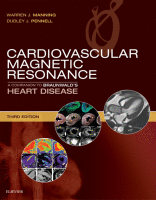Physical Address
304 North Cardinal St.
Dorchester Center, MA 02124

Myocarditis (from Greek/Latin “inflammation of the heart muscle”) is commonly used for viral myocarditis, although there are numerous other heart conditions leading to myocardial inflammation, including acute ischemic injury, infiltrative diseases, allergies, and toxic or mechanical injuries. Thus inflammatory tissue…

Arrhythmogenic right ventricular cardiomyopathy (ARVC) is a heritable heart muscle disease characterized by fibrofatty replacement of, predominantly, the right ventricular (RV) myocardium, which predisposes patients to potentially life-threatening arrhythmias and ventricular dysfunction. Affected patients typically present between the second and…

Conditions Associated With Cardiac Iron Loading There are several conditions that can potentially lead to cardiac iron loading with cardiac complications. Cardiac iron loading can occur via two distinct mechanisms: first, primary disruption of iron regulation (genetic hemochromatosis syndromes) where…

Cardiovascular magnetic resonance (CMR) exploits the inherent difference between tissues in their configuration of atoms by generating differing signals—the fundamental tissue properties T1, T2, and T2*. Whereas differences in these parameters had to be previously visualized by weighted sequences, they…

Dilated cardiomyopathy (DCM) is defined as a disease of the myocardium characterized by left ventricular dilatation and systolic impairment that cannot be exclusively explained by abnormal loading conditions (such as hypertension or valvular heart disease) or coronary artery disease. The…

As an imaging modality, cardiovascular magnetic resonance (CMR) offers unrivaled versatility and freedom of anatomic access. In relation to heart valve disease, its relative strengths include the following: Depiction by cine imaging of valve movements and jet flow in planes,…

Arteries are elastic tubes whose diameter varies with the pulsating pressure. In addition, they propagate the pulse created by ejection of blood by the heart, at a velocity that is determined largely by the elastic properties of the arterial wall.…

Coronary artery disease (CAD) is a leading cause of global mortality. It results from atherosclerosis, which is a systemic and progressive disease involving the intimal layer of large- and medium-sized arteries. Atherothrombosis, defined as atherosclerotic plaque disruption (predominantly plaque rupture)…

Although death rates in industrialized countries have been consistently falling since the 1980s, atherosclerosis is now raging throughout the developing world. As a consequence the complications of atherosclerosis have become the leading cause of mortality and morbidity worldwide. Fundamentally, atherosclerosis…

Since the report published in 1968 by Favaloro about the use of saphenous veins to restore coronary artery blood flow in 171 patients, a large number of coronary artery bypass grafting (CABG) procedures have been performed worldwide. In the United…